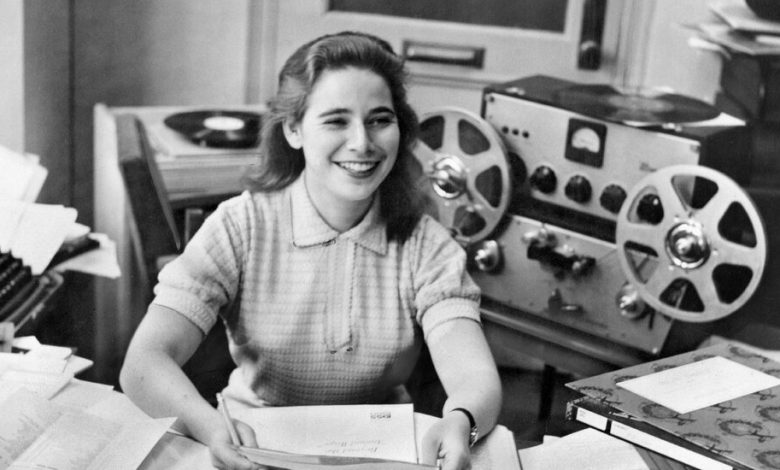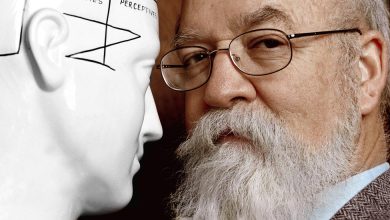Marianne Mantell, Who Helped Pave the Way for Audiobooks, Dies at 93

Marianne Mantell, who in her early 20s helped start the audiobook revolution by co-founding a record company that turned recordings of countless literary giants, including Ernest Hemingway, James Joyce and Dylan Thomas, into mass-market entertainment, died on Jan. 22 at her home in Princeton, N.J. . She was 93.
The cause was complications of a recent fall, her son Michael Mantell said.
Ms. Mantell (then Marianne Roney) was a struggling 22-year-old freelance writer in 1952 when she and Barbara Holdridge (then Barbara Cohen), a former classmate at Hunter College in New York City, founded Caedmon Records, a pioneering spoken-word label specializing in great literature.
Success came quickly. Caedmon’s first release, an album by Dylan Thomas whose centerpiece was his short story “A Child’s Christmas in Wales,” came out that same year and went on to sell more than 400,000 copies during the 1950s and to become a holiday perennial.
In a sense, Caedmon brought the idea of oral interpretation of poetry, short stories and novels from the Beatnik dens of Greenwich Village into middle-class living rooms. The company recorded or reissued popularly accessible albums featuring giants of 20th-century literature, including T.S. Eliot, Sylvia Plath, William Faulkner, Zora Neale Hurston, Langston Hughes and Gertrude Stein, all interpreting their own works.
The label also released recordings of plays by Shakespeare, Chekhov and other masters read by luminaries like Laurence Olivier, John Gielgud, Vanessa Redgrave and Ruby Dee, as well as recordings of Albert Camus and Pablo Neruda reading in their native languages and J.R.R. Tolkien slipping into fluent Elvish for “The Lord of the Rings.”
“Caedmon was the first major label to specialize exclusively in spoken-word recordings of literature,” Matthew Rubery, a professor of modern literature at Queen Mary University of London and the author of the 2016 book “The Untold Story of the Talking Book,” wrote in an email. “And, at a time when many worried about television’s influence, it succeeded in making ‘highbrow’ literature accessible to a mass audience.”
In an era when American business was dominated by Fortune 500 companies, it was rare enough for two recent college graduates to create what was in essence a tech start-up aimed at disrupting two industries, book publishing and the record business. And in an era when those corporate giants were run largely by men in Brooks Brothers suits, it was even more unusual for two women just out of college to do so.
“Caedmon was the era’s only female-owned record company, and its remarkable success stood out in a male-dominated record industry,” Mr. Rubery said. “At the time, only around 5 percent of record industry employees were women, and those women were almost all in marketing and retail roles. The rise to the top by two female entrepreneurs represented a remarkable exception.”
As Ms. Mantell wrote in a 2004 remembrance for AudioFile magazine, “Although poets had been recorded before as vanity efforts, it was Barbara and I who realized that there was an audience of literate people and made a business out of it.”
Marianne Roney was born in Berlin on Nov. 23, 1929, the only child of Max Roney, an Austrian mechanical engineer, and Serena (Berger) Roney, a Hungarian-born bookkeeper who later became an importer of housewares. The Roneys, a Jewish family, spent much of the late 1930s fleeing Nazi Germany.
After a brief stay in London, they managed in 1941 to emigrate to New York, where Ms. Mantell, who played violin and was also an avid fan of classical literature, graduated from the High School of Music & Art (now the Fiorello H. LaGuardia High School of Music & Art and Performing Arts) before attending Hunter, where she graduated Phi Beta Kappa with a degree in Greek.
After college, she made ends meet as a freelancer, writing liner notes and translating opera librettos for classical records. Frustrated by her entry-level writer’s pay, she sought to expand her professional horizons and suggested to a few classical labels that they try recording medieval poetry or the works of Shakespeare.
The labels had no interest, so Ms. Mantell and Ms. Holdridge scratched together $1,800 to start a label of their own, which they christened Caedmon after the seventh-century cowherd considered the first recognized English poet. The company’s slogan: “A third dimension for the printed page.”
As neophyte record executives, the pair needed to make a splash, so they set their sights on Thomas, the Welsh poet who had attained star status internationally and was currently on tour in the United States. Failing to gain an audience with him after a reading at the 92nd Street Y in Manhattan, they began trying to call him at his room at the Chelsea Hotel.
A famously heavy drinker and late-night carouser, Thomas was difficult to track down. According to the 2004 book “Dylan Thomas: A New Life,” by Andrew Lycett, Ms. Holdridge finally managed to catch him one morning at 5 after he stumbled home from a party and secured a meeting at the Little Shrimp restaurant in the hotel.
Thomas was skeptical of the venture, but he was swayed by their proposal: a $500 initial fee, plus $10 in royalties for sales above 1,000 albums, to record a 45-minute LP.
When Thomas turned up at the studio, he trained his woody yet mellifluous voice on five of his poems, including his famous “Do Not Go Gentle Into That Good Night,” for the album’s A-side.
They still needed to fill the B-side, however, so Thomas suggested prose — specifically his short story “A Child’s Christmas in Wales,” a nostalgic meditation on his Christmas experiences as a boy, rendered with a mournful sense of lost youth, which had recently appeared in Harper’s Bazaar magazine. “What we heard was a thunderbolt,” Ms. Mantell later wrote.
“Only when he began to record ‘A Child’s Christmas in Wales’ did we know that we were participating in an event historic in English literature: the discovery of a genre,” she continued. “Literature that, like music, must be performed to achieve its real effect.”
Caedmon rolled along through the 1950s and ’60s, and along the way attracted not only luminaries as recording artists but, unwittingly, future luminaries as workplace colleagues. Mike Nichols, later a celebrated Broadway and Hollywood director, worked as a shipping clerk. Andy Warhol, then unknown, created the cover art for an album by Tennessee Williams.
By the early 1970s, however, Ms. Mantell was ready to move on. The partners sold Caedmon to the publishing company D.C. Heath (it is now an imprint of HarperAudio) and Ms. Mantell started a distribution company for documentary films with her husband, Harold Mantell, a public relations executive and later a documentary filmmaker.
In addition to her son Michael, Ms. Mantell is survived by her daughter, Eva; seven grandchildren; and two great-grandchildren. Her husband, whom she married in 1956, died in 2006. Two other sons died before her, Stephen 2009 and David in 2011.
In her AudioFile article, which recounted a trip to Robert Frost’s house to record him in 1956, Ms. Mantell summarized her view of the company’s legacy.
“We were not just out to preserve celebrity voices (to the extent that a poet is a celebrity),” she wrote. “Our purpose was literary: to capture on tape as nearly as possible what the poet heard in his head as he wrote.”




